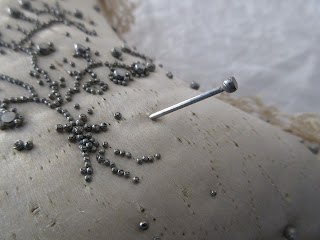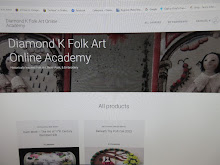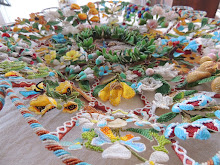Christening Pin Cushion 1137.2020.29
Many of us today, take for granted the humble straight pin, and have no concept of what an important, indispensable tool this was in the 18th c and before. Before there were zippers and velcro...buttons and hook/eye closures....there were pins. Simple, straight pins made from wire, that were used to hold ones clothing together.
Not just outerwear, or the elaborate ruffs worn by Queen Elizabeth that come to mind when most folks think of early usage of straight pins (each one of those glorious pleats was held to its neighbor with a pin)...but pins held everything together, on adults, all the way down to babies. Just wrap your head around a newborn having its pilch,(diaper), pind closed....along with the shirt, the gown, the bonnets..the forehead cloths...if swaddled all the wrappings and aprons...all held tightly together with pins. One would need a sea of pins to be dressed properly~ so not only were pins vital to dressing, they were quite valuable. Pins were often listed alongside jewelry in estate inventories and wills.

This cushion is exciting because it remains with its original set~ it is made from the same cream silk satin as the gown, bearing cloth and basket, and is trimmed with the same silk fringed fly trim. From feel, I cant say exactly what this cushion is stuffed with. It feels and sounds like a mixture of maybe straw and hair...possibly wool, which would make sense as the lanolin in the wool helps to lubricate the pins and keep them from rusting.

It was common to make a pretty design with the pins on the cushion~ many toward the later 18th c and early 19th c had sayings worked with the pins~ I'm sure most everyone has heard the saying 'Welcome Little Stranger'. Some had initials, and even dates on the cushions. This cushion's design is a bouquet of flowers with a zig zag vine border round the outside edge. Not too many of the pins have been removed and placed back hap hazard, so the design still remains true to its original placement. If enlarged, three different sizes of pins can be observed. Tiny fine pins make up the bulk of the flower stems, a medium size pin the bow and flowers, and absolutely huge pins, more akin to nails in my opinion...the center of the flowers.

Before mechanization during the Industrial Revolution, pins, including these shown, were all made by hand. The process of hand making pins was very labour intensive, and involved several different folks, each doing their own specialized jobs, with up to 18 separate steps being needed to make a single pin.
The pin itself was made from a length of wire, with the head made from another piece of wire of similar diameter to the rest of the pin. It was coiled around the body of the pin and moved up in to place at the top of the pin, and referred to as a 'wound head pin'. It was hard to produce pins this way with all the heads being the same size, and as well, the bit of wire at the top could snag on the clothing. This led to advances where the head of the pin was stamped into a flat or ball shape from the same piece of wire from the body of the pin(early 19thc). During the 18th c, large pin manufacturer's laborers could produce about 5,000 pins per day.
Do enlarge the photo above and study the heads of the pins~ the amount of slight variation on the heads is beautiful. Little wire tips can be seen sticking up on the smaller pins. There is no denying the look of a wound head pin~ the wire can easily be seen wrapping around to make the head. The larger pins are interesting. Looking from the side, seams in the head can be seen, and looking close at the tops, they have been ground down flat and the center of the pins can be seen.
The large pins are more of what I would expect to find in adult clothing use, but many are missing from the cushion so were used just as much as the smaller pins. These things are the most robust straight pins I have ever seen....I don't even think one could get a modern straight pin in this heavy a size today.
The largest size pin, alongside the finest pin in the cushion. Glory be to the early pin makers is all I can say! Even these little bits....are each such works of art.


































































